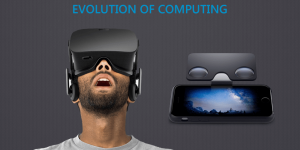
We are living in a time when each day, there is a new technological advancement. It is now more than essential to stay updated in order to stay ahead in the game. Introduction to Web 3 is one of the advancements in technologies, making the Web 2 to Web 3 transition indispensable.
Web 3.0 has established itself as the industry standard, demonstrating the general acceptance of implementing novel technological solutions. Today, more and more businesses are now migrating from Web 2 to Web 3 because of all the benefits they get with the newest technology.
Users claim that Web 3.0 is the safest and most transparent option as it has a decentralized architecture. Individuals and organizations are therefore collaborating on the development of a new generation of applications that are less restrictive and simpler to use using Web 3.
If you’re pondering how to migrate Web 2 to Web 3, then this post is for you. In this post, we shall explain to you the step-by-step procedure of web 2 To web 3 migration.
So, let’s get started…
- Introduction to Web 2.0
- Introduction to Web 3.0
- Difference between Web 2 and Web 3
- Benefits of Using Web 3.0
- Transition from Web2 to Web3
Introduction To Web 2.0
Web 2 is a web-based version that allows users to post their thoughts, alter the content of the website, and interact with servers in real time. Web 2 has been pretty popular amongst internet users. It has been in widespread use on the internet for a considerable amount of time. This technology is largely responsible for making user-generated content feasible.
It promoted the expansion of user-generated content together with interoperability and end-user usability. The concentration of the Web is not on modifying technical specifications. In contrast, it emphasizes altering the design of web pages and how they are utilized. Web 2.0 promoted user interaction and collaboration in P2P transactions, paving the way for e-commerce and social media platforms.
In spite of its many advantages and widespread usage, the second-generation Web has a number of flaws. There has been an increase in the number of fraudulent activities. In addition, a large amount of material has become obsolete with time, thereby necessitating more advanced tools to effectively address new challenges.
Introduction To Web 3.0
Web 3.0, also known as Web 3, is the successor of Web 2.0. It lets users connect to a decentralized network and have access to their own data.
Web 3 was originally referred to as the Semantic Web. It enables individuals to produce, share, and connect content through analysis and search. Instead of using numerals and keywords, the emphasis is on word comprehension. Web 3.0 is more intelligent and responsive to user demands. It uses Machine Learning and Artificial Intelligence are utilized. It allows users to access the internet from any location at any time without the need for a computer or other smart device. It provides users the option to interact in public or privately without exposing them to any kind of risks.
DIFFERENCE BETWEEN WEB2 AND WEB3
Prior to making a web 2 to web 3 transition, it is essential to have a solid understanding of the fundamental differences between the two. Therefore, before we get started with the Web 2 To Web 3 migration process, let’s take a quick look at some of the most important differences between them. Here we go…
Web 2.0 and Web 3.0 are the same technologies as they are developed on the same platforms; however, there are some significant differences. Web 2.0 primarily focuses on viewing and writing content, whereas Web 3.0 is majorly concerned with creating content (Semantic Web).
Web2 seeks to connect people, whereas Web3 combines data with meaning and increases trust. This occurs due to decentralization.
Web 2.0 network asserts control over information storage, resulting in access problems and concerns regarding the anonymity and security of online data. Web 3.0 addresses this issue by enabling the simultaneous exchange of data in multiple locations.
Web 2 utilizes fiat currency, government-issued currency, such as the US dollar. Whereas, Web3 uses encrypted digital currencies, such as Ethereum and Bitcoin.
Web 2 uses AJAX and JavaScript, HTML5, and CSS3. Whereas Web 3 utilizes Machine Learning, Artificial Intelligence, deep learning, semantic Web, and decentralized technologies.
The Web 2 application contains blogs, podcasts, video content, social bookmarking, and so on. At the same time, Web 3 applications include dApps, virtual environments, and 3D portals powered by artificial intelligence and machine learning.
BENEFITS OF USING WEB 3.0
Obviously, Web 3.0 is better than its predecessors. It offers a number of benefits that none of the more conventional web technologies today can do. Here are some of the benefits of using Web 3 over Web 2.
1. Web 3 helps developers build decentralized apps (dApps) on top of blockchain networks, which provides a higher level of security as well as transparency and immutability.
2. This technology enables the construction of smart contracts. The contracts that automatically carry out terms and conditions between the buyer and seller are written directly into lines of code. This, in turn, eliminates the role of intermediaries and lowers the expenses associated with transactions.
3. Web 3 makes payment in cryptocurrencies possible. People can use cryptocurrencies, such as Bitcoin or Ethereum, to make payments. This implies that by using Web 3, you can transfer money in a quick and safe manner without the need for a centralized authority. This, in turn, reduces the transaction fee and improves efficiency. The best part is it is absolutely safe.
4. Using Web 3, you can have complete ownership over your precious data, profile, or artwork. All your precious data gets saved on a decentralized network, thereby offering you permanent access without the need to rely on a server controlled by a third party.
5. Web 3.0 eliminates third-party interference completely. This implies that you can do any kind of transaction, such as making a payment, without having to worry about data threats.
All in all, web 3 is better than Web 2. Hence, the web 2 to Web 3 transition has become more crucial than ever.
Let’s now take a look at how to migrate Web 2 to Web 3. Here we go…
TRANSITION FROM WEB 2.0 TO WEB 3.0
The process of updating an application from Web 2 to Web 3 takes careful consideration and effort. You will need to consider a lot of things before you migrate from Web 2 to Web 3. However, the best thing is that you can do it in parts as well as in its entirety.
So, here, we will explain to you how you can transition in parts from Web 2 to Web 3. Take a look…
STEP 1: Create A Transition Strategy In Advance
Given that not everyone will be expected to make the same adjustments, it is essential to make the move as painless as possible by developing a Web3 transition strategy in advance. Create a strategy tailored to your specific circumstances, and that will satisfy your long-term requirements.
STEP 2: Data storage
Of course, your data is crucial, and you need to pay careful attention to the data storage while you begin migrating. Know that both two webs use distinct data storage systems.
Wondering how?
Here is how….
Web 2 is an application-centric architecture, which means all application data is housed on a single server in Web 2. On the other hand, web 3 is the user-centric data storage paradigm. As a result, you must find an architecture that supports both. Or it can make the transition possible for app data to be stored on a distributed network and provides easy user access to this data.
Therefore, it is absolutely necessary to adjust the application that is being migrated to allow user ownership of stored data. As a result, it is essential to establish essential strategies in order to make the transition from a Web 2 storage system (which is straightforward) to a Web 3 storage system (which is a decentralized storage system).
STEP 3: Alteration in the flow of User Interaction
When you make the Web 2 to Web 3 transition, you need to understand how the level of user interaction will alter within the application.
Know that when it’s about Web 3, the amount of user activity is slightly higher than that on Web 2. This means when a user prompts a transaction, Web 3 will necessitate enough participation from the user in the form of smart contracts.
For instance, they would require to purchase tokens in order to engage in trading or exchanging activities within the application. It is because Web 3 enables the use of cryptocurrencies; as a consequence, purchasing tokens becomes essential. Therefore, it becomes crucial to focus on ways to modify the user flow when you make a transition.
STEP 4: Payment Migration
As said earlier, web 3 enables payment via cryptocurrencies, such as Bitcoin, Ethereum, and so on. Hence, moving from Web 2 to Web 3 requires converting from a direct payment gateway to a cryptocurrency wallet. This is because Web 3 provides additional options for integrating decentralized currency.
When migrating a service that is based on Web 2, it is, therefore, necessary to take into consideration the necessity of payment transfer. If your application offers a variety of payment options, you may be able to think of various suitable ways to implement a Web 3 payment technique.
During this period of transition, you may wish to use Metamask in conjunction with wallet APIs and frameworks provided by third parties. However, it is crucial to keep users’ requirements in mind. Migrating from Web 2 to Web 3 payment methods comes with a variety of advantages. Web 3.0 wallets, for example, give users access to blockchain-based cryptocurrency services and non-fungible tokens.
Knowing that several transactions have been recorded when a user generates a token is critical. Therefore, in addition to storing all the data needed for the Web 3 version, it is also necessary to generate a token. Also, it is crucial to keep tabs on every user that trades tokens. This means that all data must be kept in Web 3, along with details about the previous and present owners.
STEP 5: Data Security
User experience (UX) and data security are important components when migrating Web 2 to Web 3. Accessibility is one of the most critical factors to take into account. Know that Web 3 interfaces give non-technical users varying degrees of accessibility than Web 2 interfaces.
This means that you might face certain challenges while you migrate from Web 2 to Web 3 bridge. Of course, web 3 is safer than Web 2. However, it is just as important to implement and improve the data privacy component as it is to provide data security.
You need to reassure users that they won’t experience a severe disruption in service as a result of the way you plan to move. In addition to this, a user-friendly interface should be developed, the accessibility of Web 3 components should be improved, and learning methods should be established that will help users and operators transition more easily into the new Web.
STEP 6: Don’t Eliminate Web 2 Completely
Keep Web 2 around since you’ll need it to host everything about your web service on-chain, from the UI to the databases. It is because a successful transition strategy will use elements from both Web 2 and Web 3 approaches. In addition, Web3 and the metaverse will predominantly modify marketing and communication responsibilities, resulting in the creation of new job titles, which means that the shift from Web2 to Web3 must begin with a solid Web2 base.
End Note…
So, these are the steps you need to follow in order to migrate from Web 2 to Web 3. But know that Web 2 to Web 3 transition is pretty challenging. Hence, it is crucial to first have a grasp of the fundamental characteristics of Web3. Having a fundamental acquaintance with Web 3 in advance will ensure a seamless transition. Also, knowledge of Web 3 in advance will help you transform those constraints into viable areas for improvement according to the fundamental characteristics.
Since Web 3 has such a diverse set of capabilities, the migration to it requires careful planning and thought. It is absolutely necessary to have an understanding of the shifts that new technologies bring about and to put these shifts into practice in order for modern apps to run efficiently. Have fun with the transition, and make sure that everything goes according to plan.
FAQs
1. Why is the Web 2 to Web 3 transition important?
Migrating from web 2 to 3 is crucial to stay updated and stay ahead of the game. Transferring from older technology to newer technology is always beneficial to developers, firms, and users. Web 2 to Web 3 transition allows for peer-to-peer transactions, eliminating the role of intermediaries completely.
2. How can Web 3.0 help business owners?
Web 3 is a newer technology with more advanced features that encourage even more extraordinary innovation and entrepreneurialism. It facilitates the creation of virtual shops and the monetization of digital assets.
Web 3.0 technologies allow for an increased level of transparency that is a MUST for business owners and their customers. Moreover, it increases customers’ level of confidence in a business, which leads to improved sales and better ROIs.
3. How can a corporation obtain a competitive advantage by utilizing Web 3.0 technologies?
Web 3 offers myriads of advantages to users, including corporations and business owners. The first and foremost advantage of migrating to Web 3 is that it completely eliminates the role of third-party data brokers. Data is one of the most important aspects of any business. Keeping clients’ data secure is businesses’ primary responsibility. In addition to this, it provides:
a) Improved customer relationship management.
b) Control of supply chain operations.
c) An entirely fresh perspective on marketing.
Thanks for reading… 😊 😊






